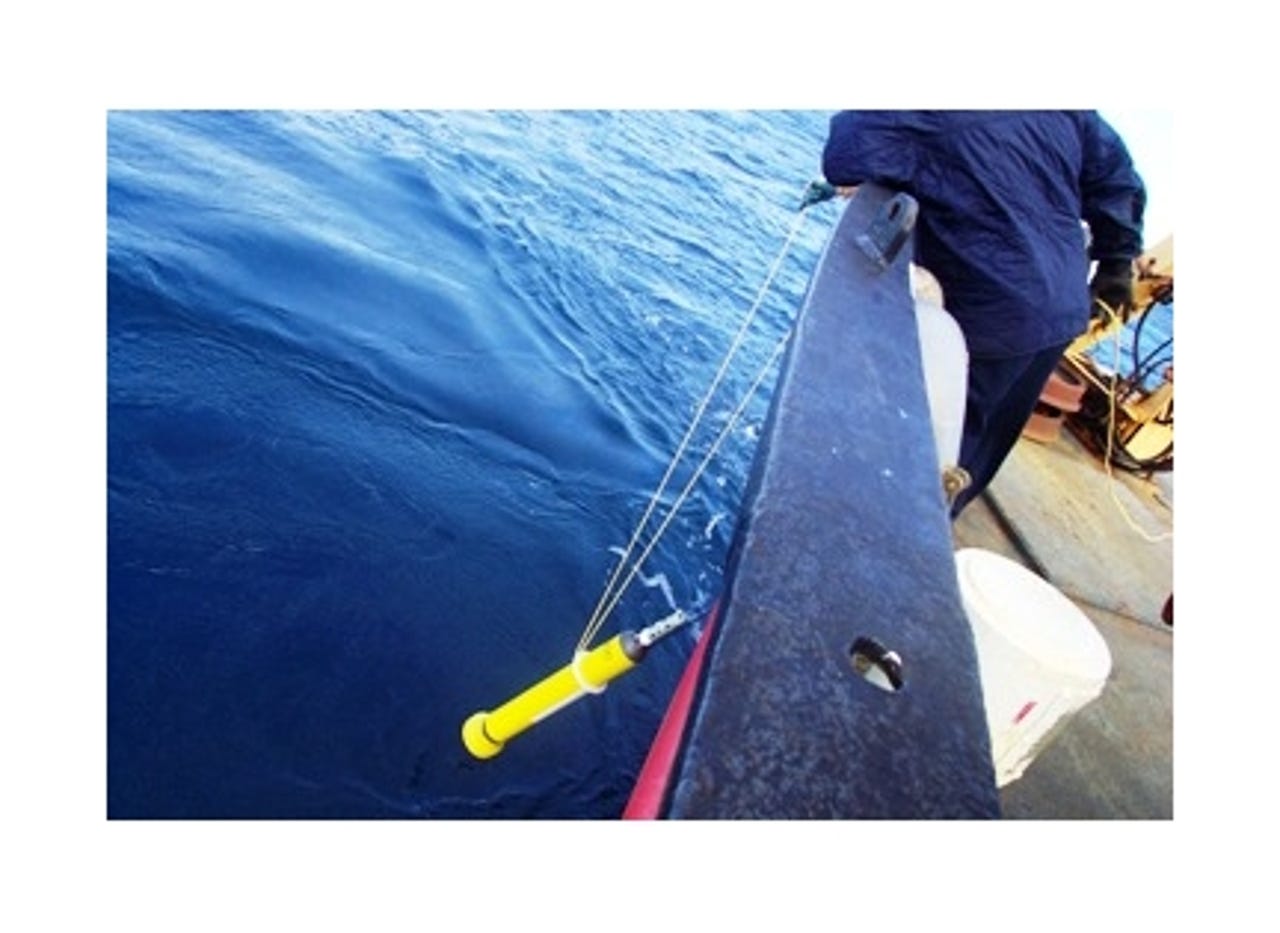Floating computers fight climate change

The Met Office is taking part in a global programme to monitor the world's oceans to improve understanding of how they influence climate change.
The Argo programme uses thousands of floating devices, like the one pictured, which provide continuous data from even the remotest parts of the world's oceans.
The Met Office manages the UK part of the programme and has deployed around 230 Argo floats to date. It works in partnership with the British Oceanographic Data Centre, the National Oceanography Centre in Southampton and the UK Hydrographic Office.
The Argo programme was started back in 2000 — with the first UK float deployed in 2001 — and, by the beginning of November this year, there were around 3,000 of these floating computers in operation.
To maintain this level, around 800 Argo floats need to be deployed per year — at a total cost of £12m — as deployed devices reach the end of their working life.
The UK part of the programme is jointly funded by Defra, the MoD and the Natural Environment Research Council.

An Argo float is deployed from a Canadian coast guard vessel southeast of Halifax, Nova Scotia in October this year.
The floats drift freely in the ocean at various depths, measuring temperature, salinity and speed of current near the surface. They also measure temperature, which is critical in measuring sea-level rise.
This diagram shows how the Argo float works.
Each float weights 25kg, is two metres in height (including its aerial) and costs around £15,000 to operate over its lifetime.
The floats normally drift at depths of 2,000 metres or 1,000 metres but, every 10 days, the bladder in the float fills with water, making it rise to the surface so that it can send its data to the various research centres via satellite.
After between six and 12 hours, the float then descends back to its operational depth. Each float is designed to repeat this cycle around 150 times during its lifetime.
The information is transmitted to various satellites then distributed around the world. The standard satellites can locate the floats to within 100 metres of their position.
The Argo programme also uses the US GPS satellites Iridium and Orbcomm, which allow more detailed data to be transmitted over a shorter period of time.
This Argo float was deployed in October 2007 in the Southern Ocean by the University of Washington.
A hole was drilled through ice 1.5 metres thick, which will later melt, allowing the float to surface and transmit its stored data in early 2008.
The Argo programme uses three different kinds of floats, developed by different research groups: the Apex (shown previously), Provor and Solo.
This is a Provor float deployed in the Southern Ocean.
Adam Hartling (left) and Richard Boyce, research technicians from the Bedford Institute of Oceanography, prepare to deploy an Argo float just off the coast of Nova Scotia.
The European-led Global Monitoring for Environment and Security (GMES) programme is planning to use satellites to monitor climate change.